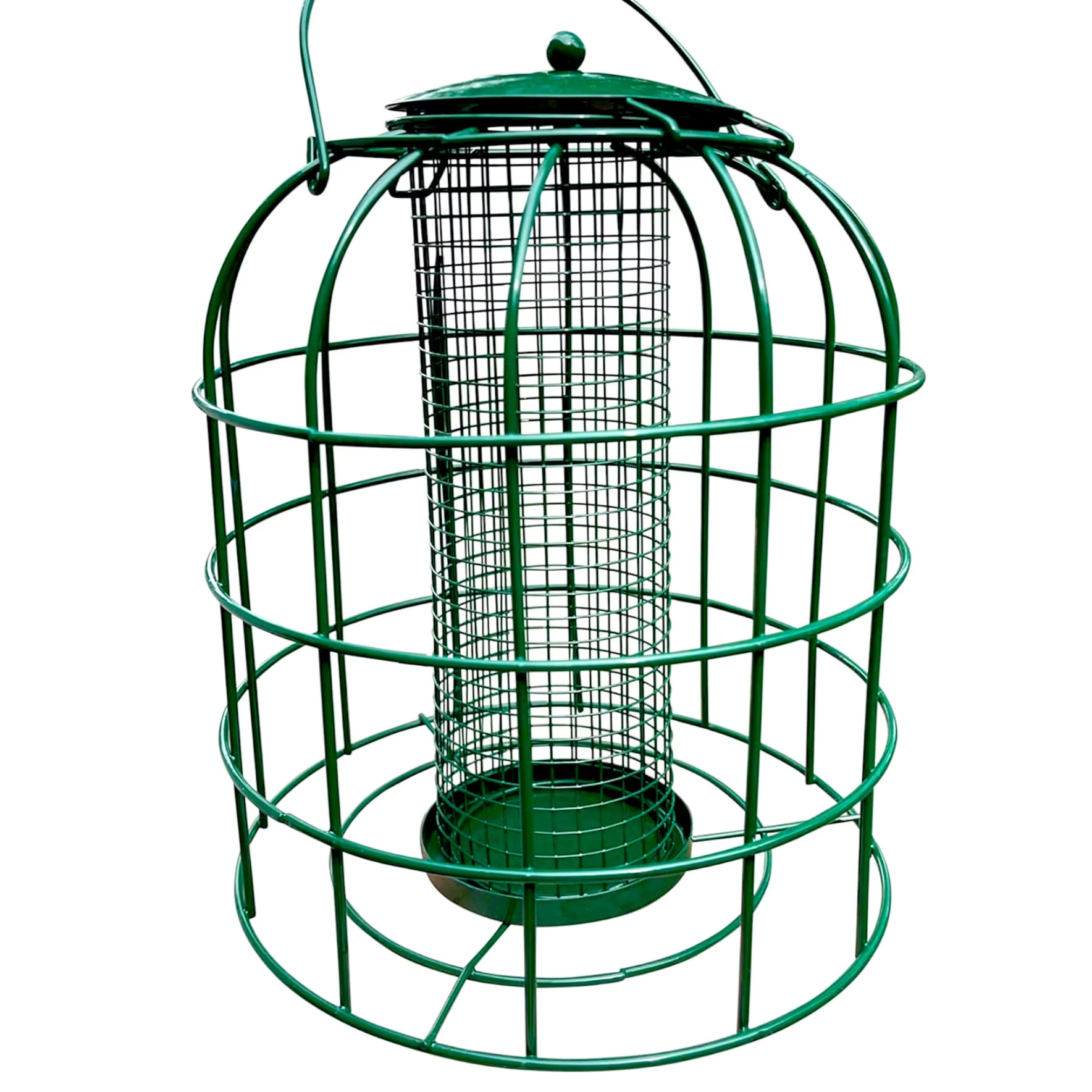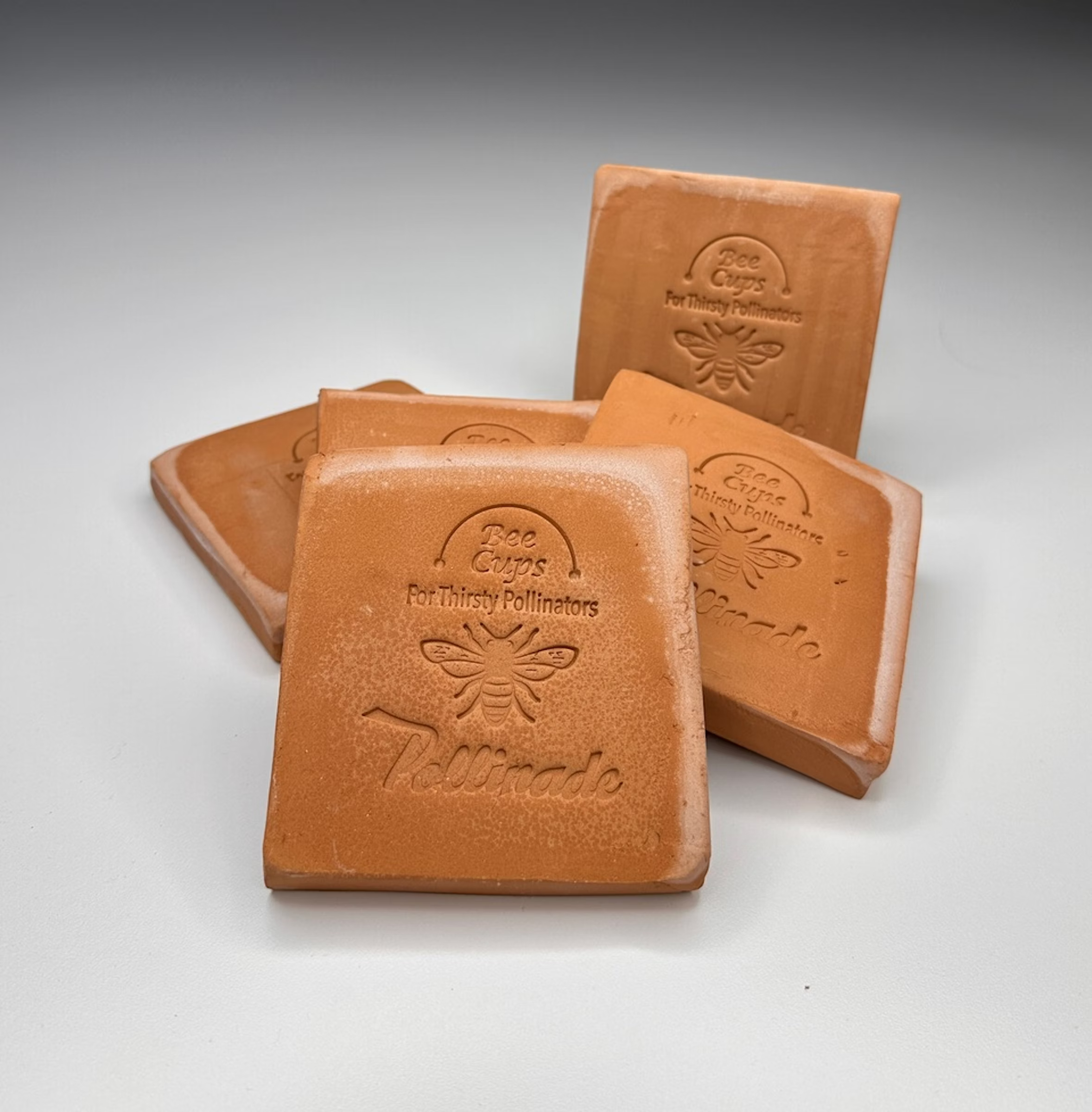Bird Feeding Essentials: Why Feeding Matters, Plus Food Tips To Attract Birds To Your Backyard
Feeding birds brings pleasure, but make sure you consider the pros and cons, the best things to feed birds, and smart gardening tips to keep birdies safe and happy

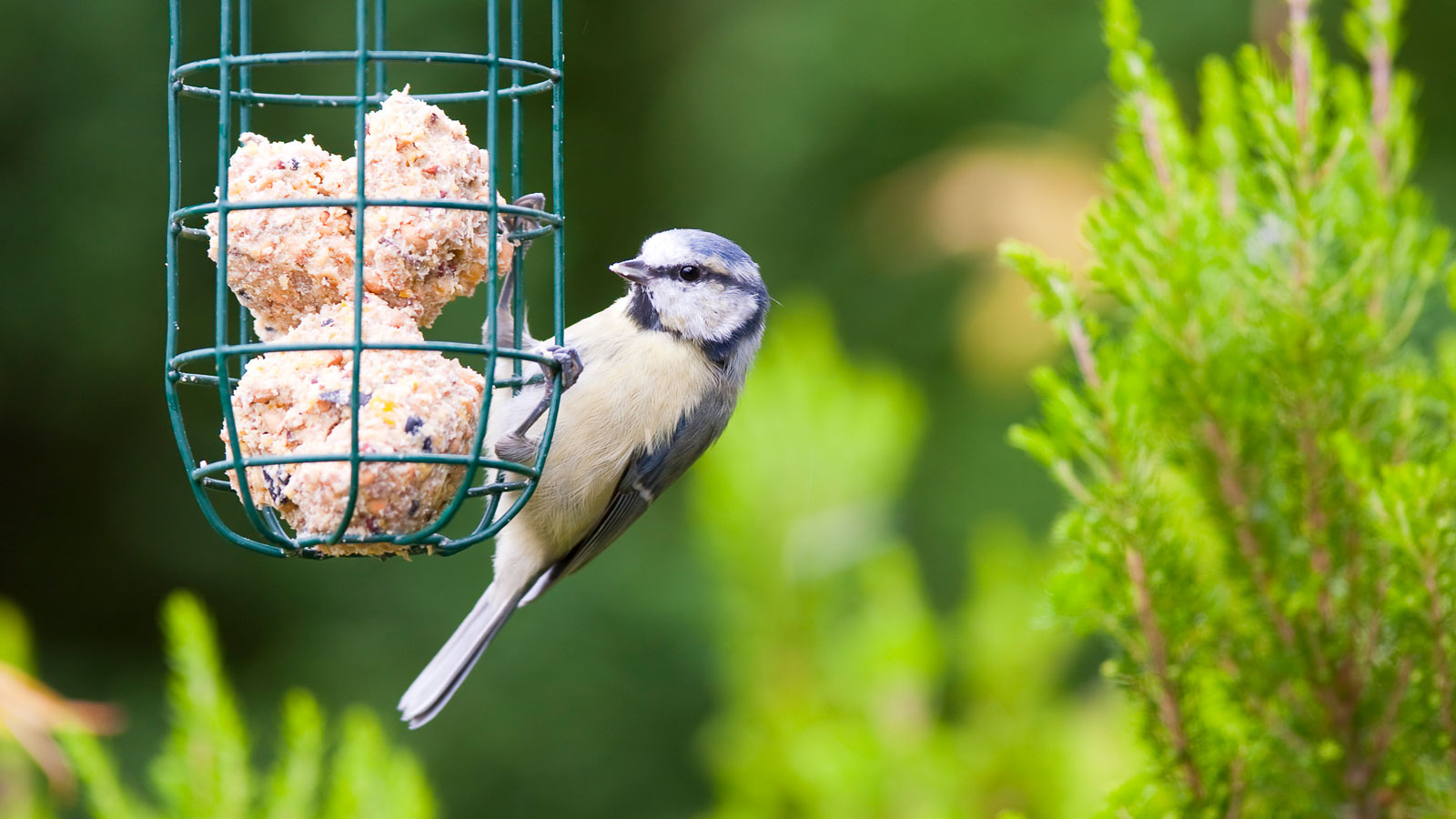
As much as we appreciate the ornamental and edible treasures of our gardens, there is just as much joy to be had in looking out of the back window and seeing birds at play or hearing them sing in the trees. For many wildlife-loving gardeners, making sure yards and growing spaces support bird feeding is a highly rewarding activity. Along with water and shelter, it is one of the key ways of ensuring that your garden becomes a bird sanctuary that can sustain, protect and delight feathered friends.
With shrewd planting and gardening steps, any landscape can attract wildlife, and adding bird feeders can create a wildlife garden for all manner of birdies to visit. But before you start making plans for feeding birds, it’s important to think about the pros and cons, as well as the health and welfare of the wildlife you are hoping to attract.
Does feeding birds help them over the long run, or does it have a hidden downside? Are there any problems with bird feeders that need to be considered? And what kind of food for birds is optimal? Read on for the best approaches to get birds flocking to bird feeders, plus the safest and easiest ways to help out with backyard bird feeding.
Pros and Cons of Feeding Birds
It’s a lively debate among neighbors and social media fans: does bird feeding ensure wild bird survival, or does it create a dependency that endangers the birds we love? While bird lovers are right to be concerned and to ask the question, the broad answer is that neither of these extremes is reality. For anyone seriously keen on developing a bird garden, there are pros and cons to feeding backyard birds.
You may have read that bird feeding creates a dependence on humans which can endanger bird numbers. What happens, people argue, when supplemental feeding stops? How will the birds survive through a long, cold winter without the expected help? In truth, most birds meet the vast majority of their energy needs from natural foods rather than bird feeders.
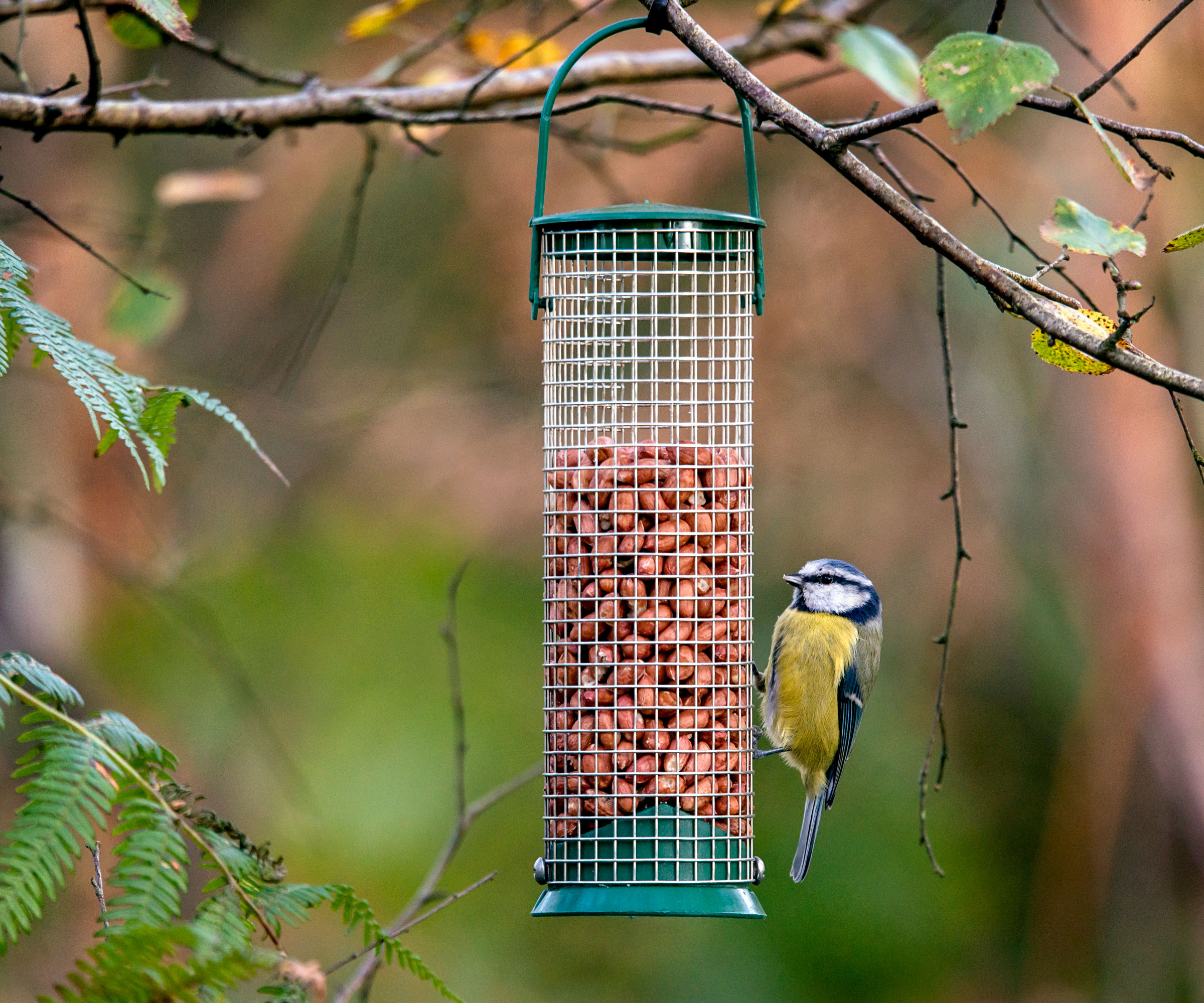
While there are a few feeding issues that you should be aware of when it comes to helping your little friends, wild birds have survived without human help for centuries. Bird feeders are not essential to their preservation. That said, backyard birds can benefit from having extra food easily accessible.
However, if you have a bird feeder, you are obliged as a steward of nature to keep any containers clean. Unsanitary conditions can lead to problems with bird seed feeding which can endanger feathered guests. This can happen when infected birds bring diseases to the feeder. Birds can also get sick if they eat foods contaminated with fungus. Regular cleaning and disinfecting of feeders is essential if you want to stop the transmission of infections.
Sign up for the Gardening Know How newsletter today and receive a free copy of our e-book "How to Grow Delicious Tomatoes".
Another downside is that bird feeders can attract predators or pests to your garden. An increase in squirrels may not be welcome – to say nothing of local cats. Also, if feeders are placed too close to a window, they could cause birds to fly into the glass, unless you take precautions. Give these factors due consideration before committing to the service of feeding birds.
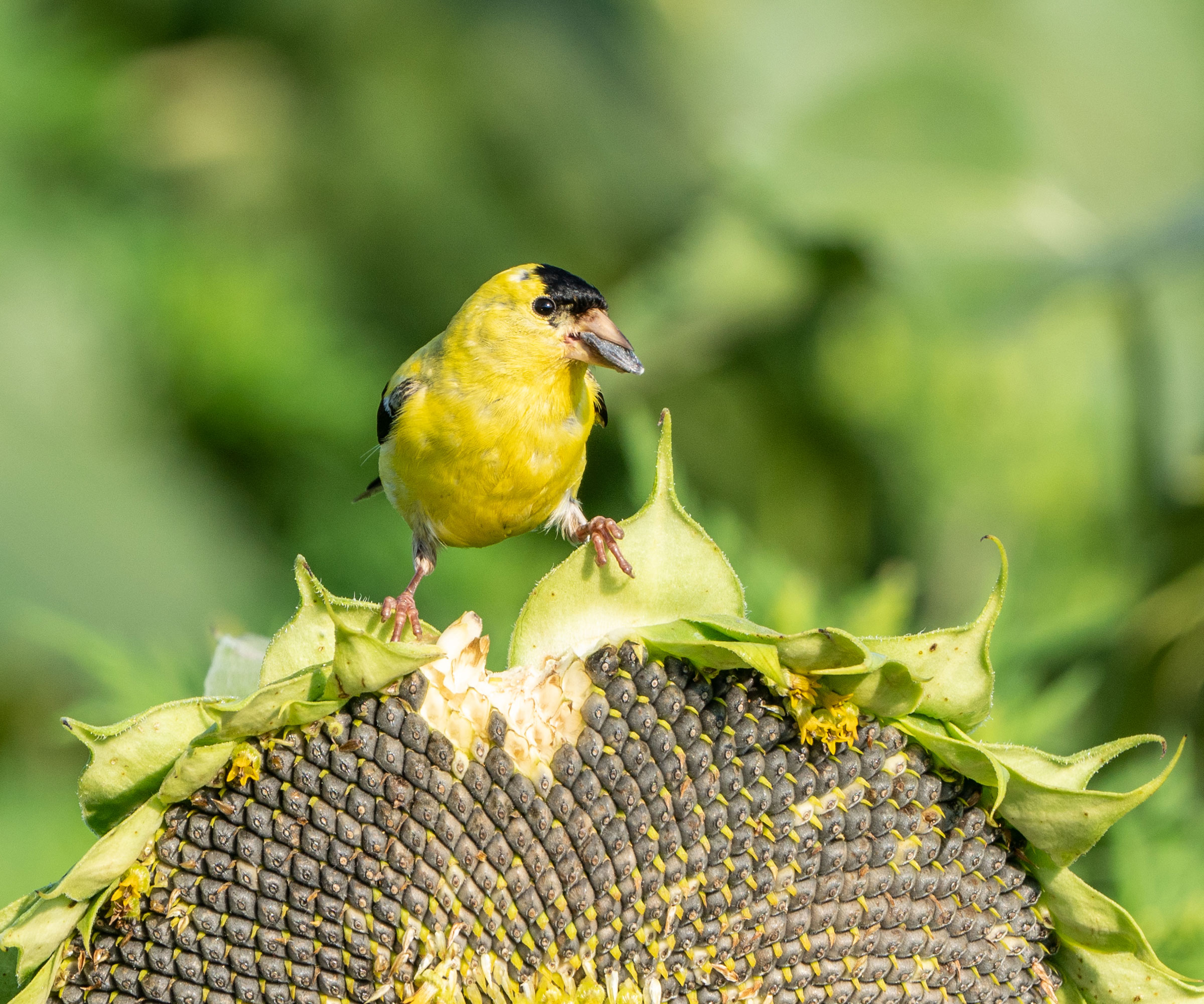
What Can I Feed Birds?
Deciding on food for birds requires an expansive approach, depending on the types of birds you want to entice and support. Wild birds enjoy a wide variety of food you can set out, but not all birds like the same thing. Certain bird species prefer specific food options. The types of food you might consider in order to attract cardinals, for instance, are not the same as those to attract hummingbirds, for instance.
For hummingbirds, you’ll be wanting to think about ways to either support or supplement their need for nectar. However, for most other garden birds you might wish to see, seeds are amongst the most popular food stuffs. Sunflower seeds – entire seeds or hulled seeds – are a common bird treat that most wild birds love. Of course, seeds also attract squirrels, so you’ll have to take steps to limit access.
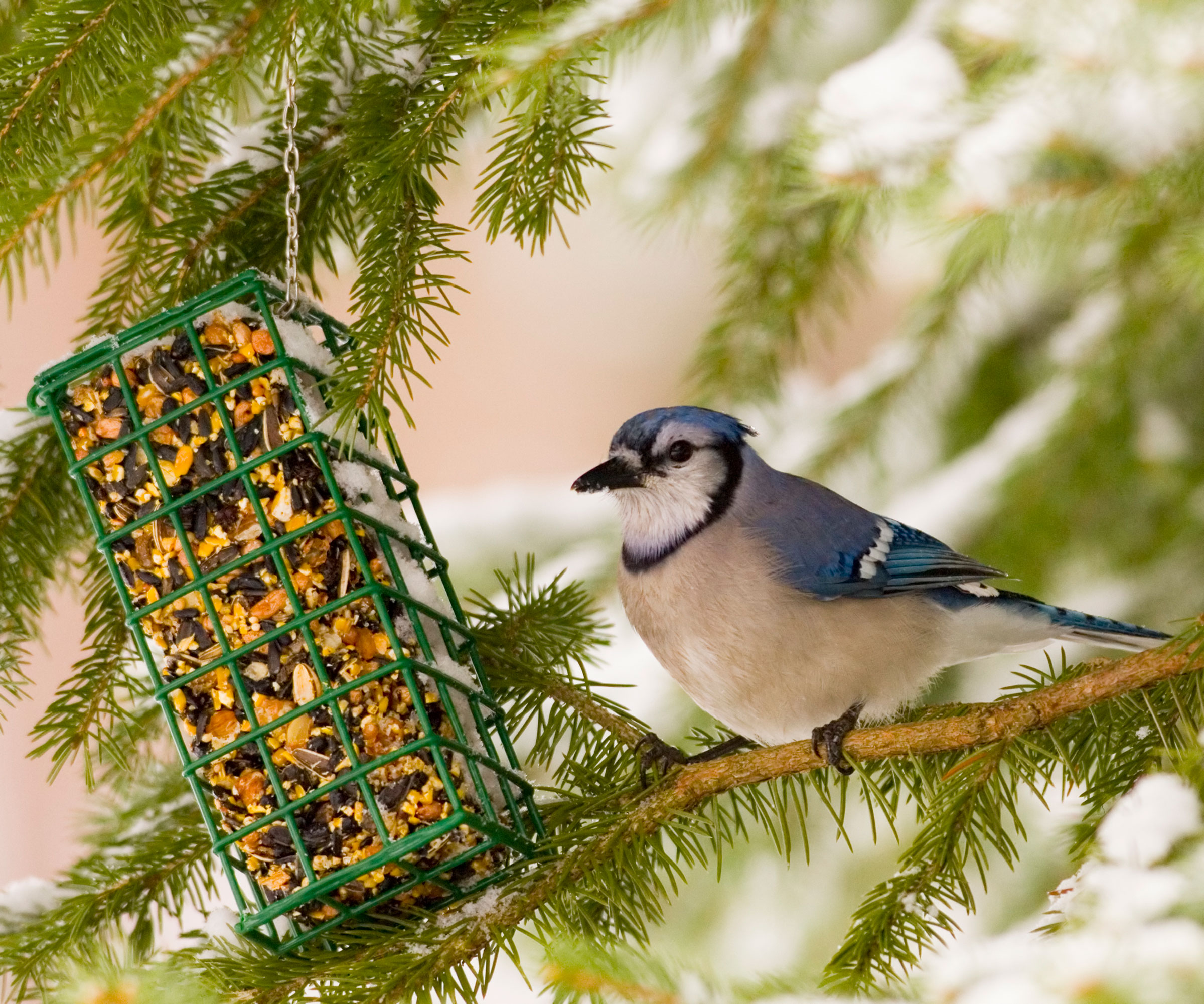
Other seeds wild birds enjoy include nyjer (small black seeds in the sunflower family), white proso millet (small yellow grass seeds) and safflower. The latter are popular with chickadees and cardinals, while nyjer seeds are loved by goldfinches and buntings. Watch out for mixed seed packets, since birds often reject the less desirable food and knock it out of the feeder. This can cause waste.
Seeds are not the only food source wild birds love. Suet, mealworms and fruit are popular, too. Depending on the time of year and the shrubs you grow, berries can be a source of nourishment in cooler months. Meanwhile, suet (beef fat) is high in calories, making it ideal for busy birds like woodpeckers, especially in cold weather.
It’s easy to make a simple DIY feeder by drilling holes in a piece of wood and stuffing them with suet, then hanging the wood from a tree. You can add seeds and dried fruits to appeal to more birds. Suet is also available commercially in packages mixed with seeds or fruits. You might also like to cut up apple chunks or orange pieces and stick them on tree branches.

Growing Plants for Feeding Birds
Growing a variety of plants, shrubs and flowers attracts birds to the garden, to feast on berries and seeds as well as to enjoy shade and protection. While bird feeders are popular, a thoughtful selection of annuals, perennials, shrubs and trees can create a real haven for hungry visitors. Taller plants offer shelter, while fruit or seed-bearing plants like sunflowers, Russian sage and zinnias, like those available in the Gardening Know How Shop, provide food. Fruiting shrubs like holly offer both.
When you create a backyard environment for wildlife, native fruit trees, shrubs and plants should be first on the list. They are easier to grow, tolerant of the peculiarities of the climate, and drought resistant. Pretty North American native flowering dogwood (Cornus florida) is a charming berry-producer for robins, thrushes and grosbeaks, and crabapples (Malus spp.) are great for feeding cardinals and finches in winter. Spicebush (Linera benzoin) is also a great option for supplying birds with fatty fruits. You can find a colorful and rewarding selection of native plants and shrubs in the Gardening Know How Shop.
Flowering plants help hummingbirds, as well as attracting insects. Grow full sun hummingbird plants and flowers that bloom in spring, summer and fall to keep hummers well supplied. It’s also helpful to include nectar-rich tubular flowers for hummingbirds. Red cardinals and ‘Major Wheeler’ Trumpet Honeysuckle, both available in the Gardening Know How Shop, are great options. Grasses are also useful for food, shelter, and nesting material, while flowering vines attract hummers, as well as decorating fences. Cherry trees are also magnets for birds.
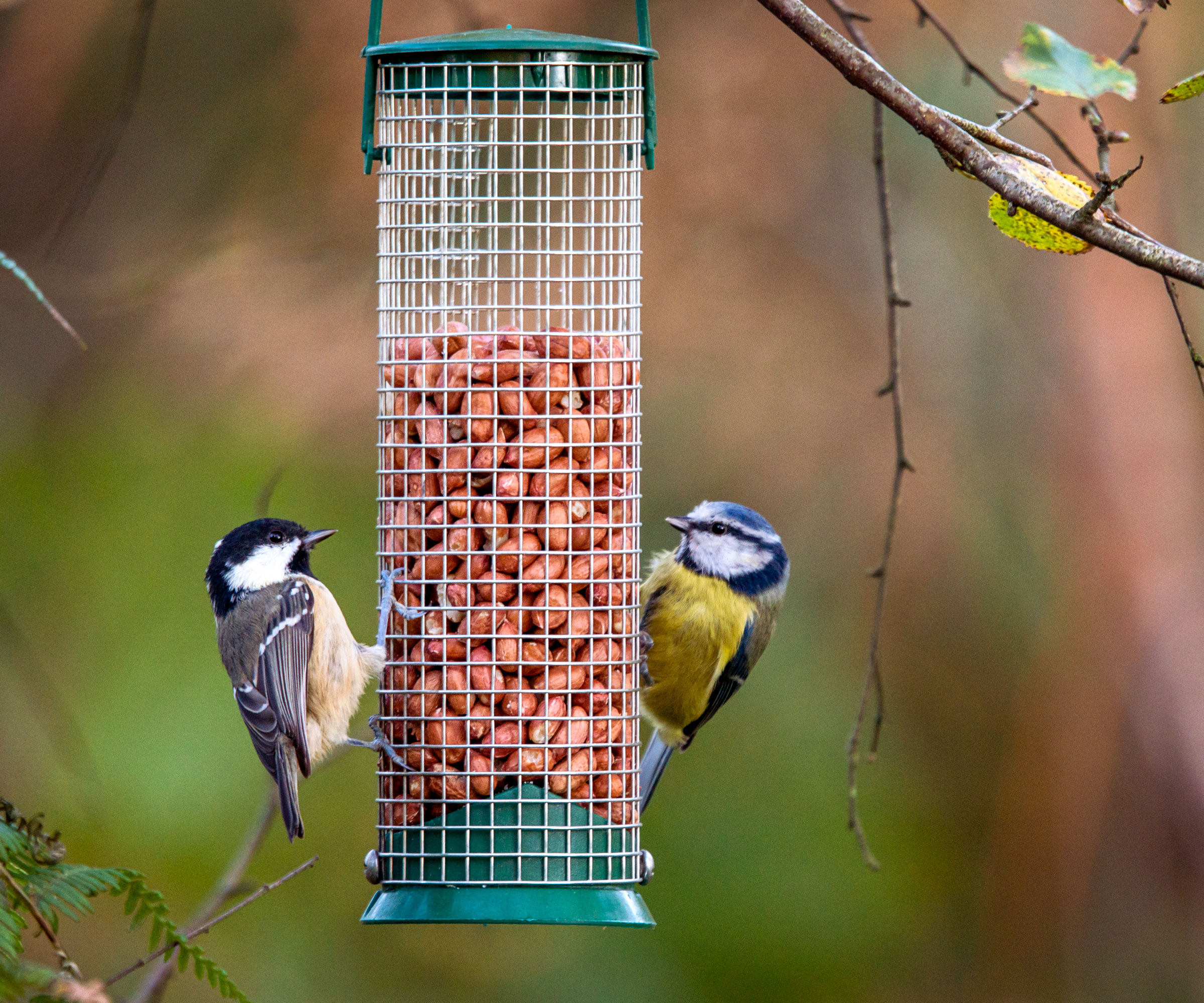
Frequently Asked Questions
Is it OK to throw bird seed on the ground?
Throwing seed is allowed, in the sense that it is not illegal. But ground feeding tends to attract other wildlife to the area of the bird feeder, and some animals and birds might be predators to the feeder birds. It’s better to consider other food for birds in the form of plants and seed heads, bird tables, and elevated feeders.
Do birds like feeders high or low?
Birds prefer visiting feeders that are high enough in the air to protect them from ground predators. And they like to have a clear line of sight around them to watch for predator birds. However, if the feeder is too high, it will be hard to clean and to refill.
More Delightful Wildlife and Pollinator Ideas
- Looking for other ways to turn your yard into a haven for birds and other wildlife? Read our guide on 10 easy ways to create a wildlife sanctuary in your garden and transform your yard into a veritable wildlife habitat!
- If we’ve inspired you to entice more pollinators to your backyard, why not grow some nectar-producing plants? We reveal the best nectar-rich plants to attract more pollinators and honey bees to your garden.
- Do you want to support more bees and butterflies but feel a little short on gardening space? Worry not, as these compact potted pollinator garden plant ideas are ideal for smaller spots.
- Fancy bringing even more butterflies to your garden beds and borders? Try these butterfly magnet flowers for a captivating season of winged beauty.
- Keen to explore even more ways to protect local pollinators and wildlife? Visit the specially curated Pollinator Garden section of the Gardening Know How Shop for ideas and inspiration on how to delight bees, butterflies, birds and other pollinators.
This article features products available from third party vendors on the Gardening Know How Shop. Keep in mind that our plant inventory is limited - so if you’re thinking of purchasing, don’t wait!

Teo Spengler is a master gardener and a docent at the San Francisco Botanical Garden, where she hosts public tours. She has studied horticulture and written about nature, trees, plants, and gardening for more than two decades, following a career as an attorney and legal writer. Her extended family includes some 30 houseplants and hundreds of outdoor plants, including 250 trees, which are her main passion. Spengler currently splits her life between San Francisco and the French Basque Country, though she was raised in Alaska, giving her experience of gardening in a range of climates.
